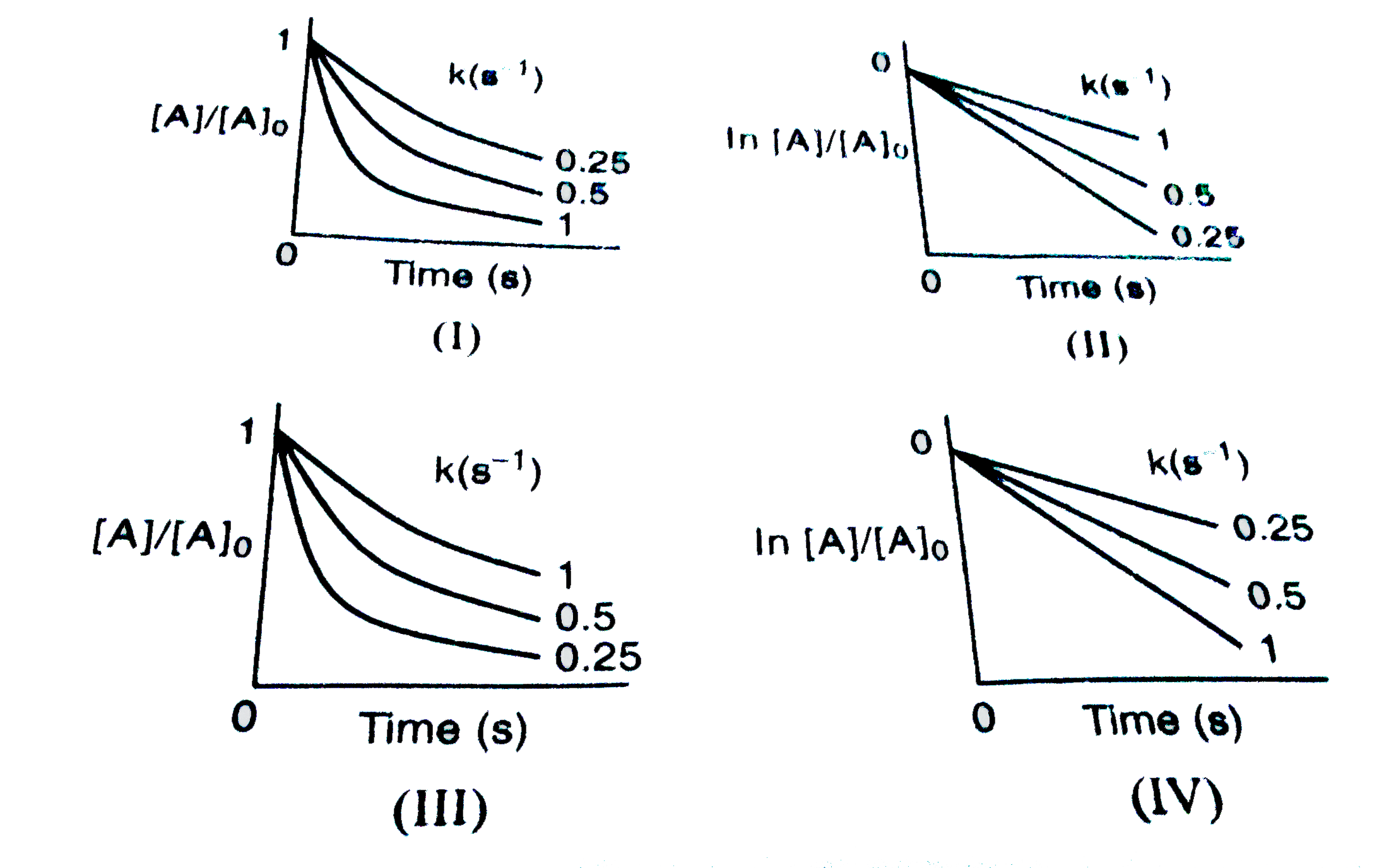For a first-order reaction, Ak−−→B, the degree of dissociation is equal to
e−kt
1−e−kt
ekt
(1+e−kt)
The correct Answer is:B
To determine the degree of dissociation for the first-order reaction Ak→B, we can follow these steps:
Step 1: Define the degree of dissociation
The degree of dissociation (α) is defined as the fraction of the initial amount of reactant that has reacted. For a reaction A→B, if A dissociates to form B, we can express the degree of dissociation as:
α=XA0
where X is the amount of A that has dissociated and A0 is the initial concentration of A.
Step 2: Relate the concentration of A at any time t
For a first-order reaction, the concentration of A at time t can be expressed using the first-order rate equation:
(A)=A0e−kt
where k is the rate constant and (A) is the concentration of A at time t.
Step 3: Express X in terms of A0 and (A)
At time t, the amount of A that has reacted is:
X=A0−(A)=A0−A0e−kt=A0(1−e−kt)
Step 4: Substitute X into the degree of dissociation formula
Now, substituting X into the degree of dissociation formula:
α=XA0=A0(1−e−kt)A0=1−e−kt
Conclusion
Thus, the degree of dissociation for the first-order reaction Ak→B is given by:
α=1−e−kt
The degree of dissociation (α) is defined as the fraction of the initial amount of reactant that has reacted. For a reaction A→B, if A dissociates to form B, we can express the degree of dissociation as:
α=XA0
where X is the amount of A that has dissociated and A0 is the initial concentration of A.
For a first-order reaction, the concentration of A at time t can be expressed using the first-order rate equation:
(A)=A0e−kt
where k is the rate constant and (A) is the concentration of A at time t.
At time t, the amount of A that has reacted is:
X=A0−(A)=A0−A0e−kt=A0(1−e−kt)
Now, substituting X into the degree of dissociation formula:
α=XA0=A0(1−e−kt)A0=1−e−kt
Thus, the degree of dissociation for the first-order reaction Ak→B is given by:
α=1−e−kt
Topper's Solved these Questions
Similar Questions
Knowledge Check
The degree of dissociation of PCl5
AIncreases with increasing pressureBDecreases with increasing pressureCNo effect on change in pressureDDecreases with decreasing pressureThe equilibrium constant Kp for the reaction
A⇔2B
is related to the degree of dissociation (α) of A and total pressure P asA4α2P1−αB4α2P21−αC4α2P1−α2D4α2P21−α2For a Ist order reaction of the form
Ak−−→B
the correct representations are :
 AI and IIBIII and IVCI and IVDII and III
AI and IIBIII and IVCI and IVDII and III
For a first order reaction, the half-life periof is 0.263k.
View SolutionDegree OF dissociation||Extent OF reaction
View SolutionThe values of Kp and Kp2 fot the reactions X⇔Y+Z , (a)
and A⇔2B , (b)
are in the ration of 9:1. If the degree of dissociation of X and A is equal, then the total pressure at equilibriums (a) and (b) is in the ration
View SolutionFor a reaction,
4A⇔5B
degree of dissociation is 10% at a pressure of 2 atm and 300 K.what will be approx degree of dissociation at 0.04 atm pressure and 300 K.
View SolutionFor a reaction nA⇔Ab, degree of dissociation when A trimerises is
View Solution
